The deepest well in the world. How to properly drill pits under the pillars of the foundation and the fence
In the second half of the 20th century, the world became sick with super deep drilling. In the United States, they were preparing a new program for studying the ocean floor (Deep Sea Drilling Project). The vessel Glomar Challenger built specifically for this project spent several years in the waters of various oceans and seas, drilled almost 800 wells in their bottom, reaching a maximum depth of 760 m. By the mid-1980s, the results of offshore drilling had confirmed the theory of plate tectonics. Geology as a science was born anew. Meanwhile, Russia went its own way. Interest in the problem, awakened by the successes of the United States, resulted in the program "Exploring the Earth's interior and super-deep drilling", but not in the ocean, but on the continent. Despite the centuries-old history, continental drilling was a completely new business. After all, it was about inaccessible depths - more than 7 kilometers. In 1962 Nikita Khrushchev approved this program, although he was guided by political motives rather than scientific ones. He did not want to lag behind the United States.
The newly created laboratory at the Drilling Engineering Institute was headed by Nikolai Timofeev, a well-known oil engineer. He was instructed to justify the possibility of superdeep drilling in crystalline rocks - granites and gneisses. The research took 4 years, and in 1966 experts made a verdict - it is possible to drill, and not necessarily with the technology of tomorrow, enough equipment that already exists. The main problem is the heat at depth. According to calculations, as the penetration into the rocks forming the earth's crust, the temperature should increase every 33 meters per 1 degree. Hence, at a depth of 10 km, we should expect about 300 ° C, and for 15 km - about 500 ° C. Such heating drilling tools and the devices will not stand. It was necessary to find a place where the bowels are not so hot ...
This place was found - the ancient crystal shield of the Kola Peninsula. The report prepared at the Institute of Physics of the Earth, said: for billions of years of its existence the Kola shield has cooled down, the temperature at a depth of 15 km does not exceed 150 ° С. And geophysicists prepared an approximate cut of the bowels of the Kola Peninsula. According to their data, the first 7 kilometers are the granite strata of the upper part of the earth's crust, then the basalt layer begins. Then the idea of a two-layer structure of the earth's crust was generally accepted. But as it turned out later, both physicists and geophysicists were wrong. The drilling platform was chosen at the northern tip of the Kola Peninsula near Lake Vilgiskoddeiaivinjärvi. In Finnish it means "Under the wolf mountain", although there are no mountains or wolves in that place. The drilling of a well with a design depth of 15 kilometers began in May 1970.
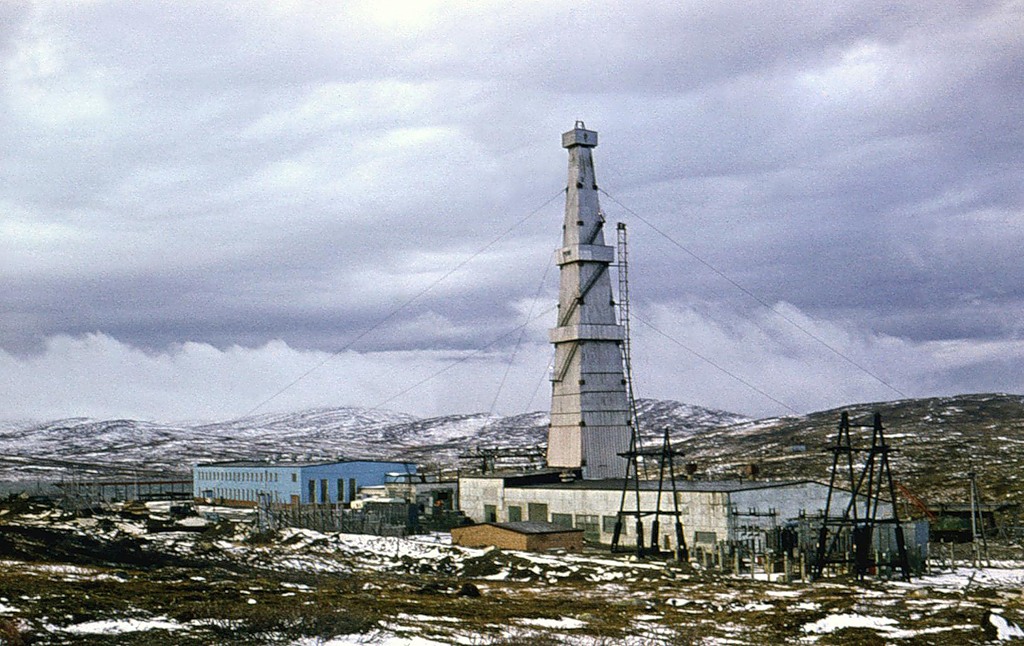
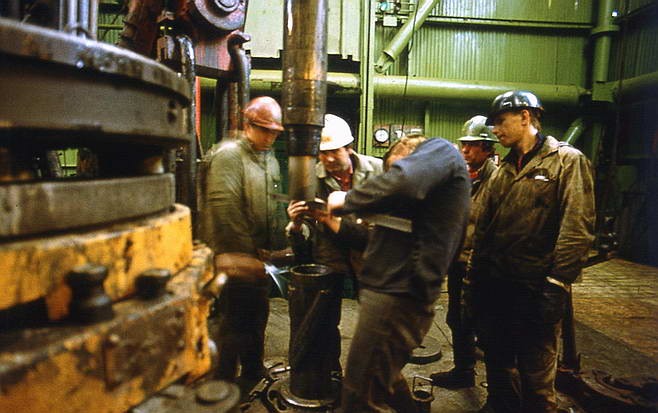
H o
Here you can listen to the hellish sounds from the well.
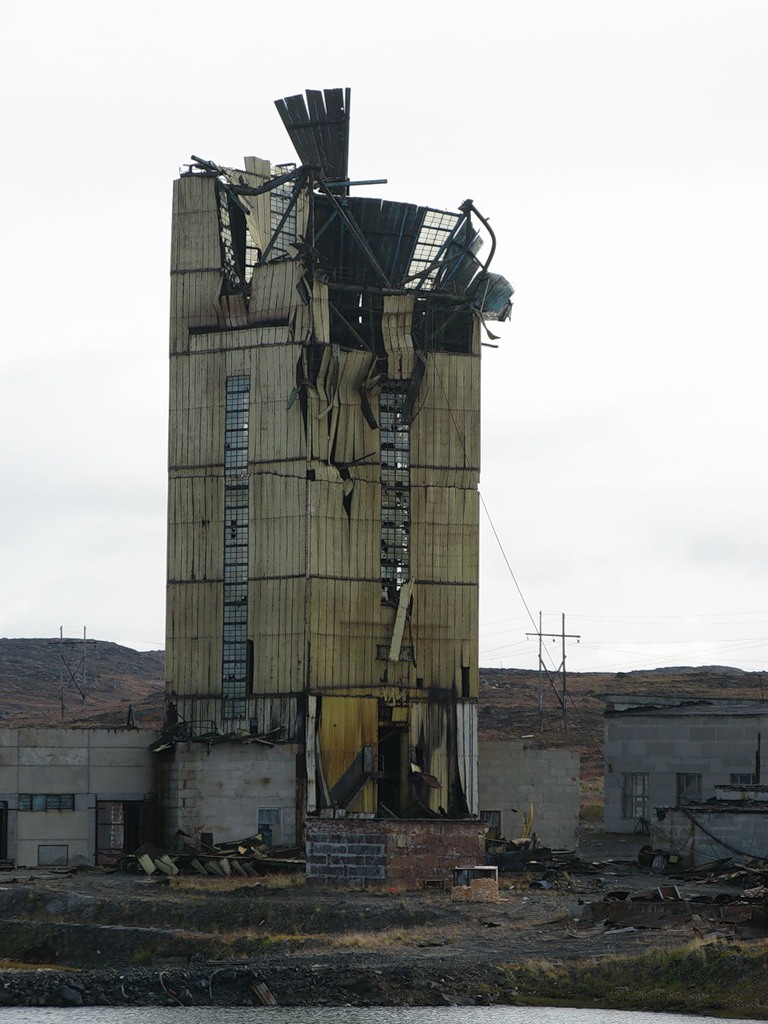
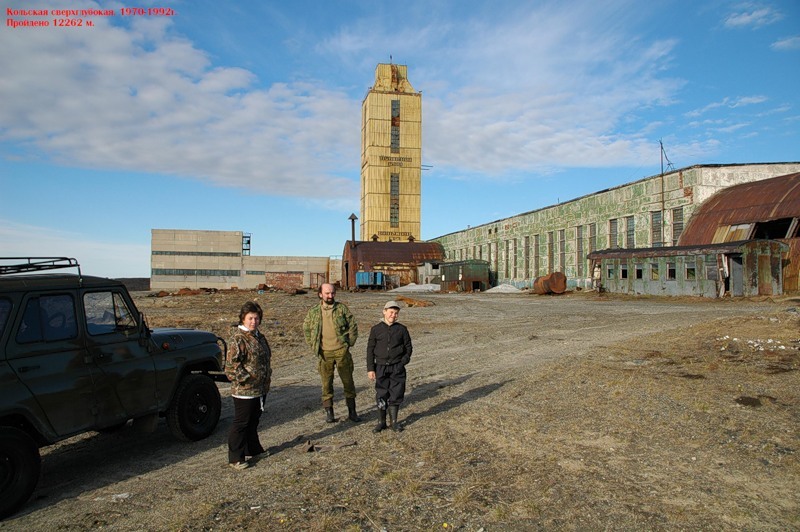
GlavTraktor company provides services for drilling holes in the ground, including drilling pits under the poles. Depending on the size of the wells, their number and soil category, the drilling equipment is selected, it can be a single-operator pit, a more powerful pit for two operators, a hydraulic drill for drilling complex soils or a mini excavator with drilling equipment for a large amount of work. Our fleet of equipment and personnel qualification allow us to perform any work on drilling holes in the earth for an adequate time. The cost of drilling under the pillars depends on the class of equipment used and the amount of work.
GlavTraktor company provides drilling services in Moscow and throughout the Moscow region. It is especially convenient to use our drilling services for the poles to customers from the following localities: Klin, Tver, Lobnya, Dolgoprudny, Skhodnya, Solnechnogorsk, Istra, Dedovsk, Veshki, Khimki, Zelenograd, Krasnogorsk, etc. Also, pits under the poles will suit customers from Pavshino floodplain, Kurkino, River station, Levoberezhny district, Tushino, Khovrino, Golovinsky and Voykovsky districts.
Prices for drilling holes in the ground in 2016.
| The depth of drilling with a manual petrol bar up to 0.9 meters | |||
|---|---|---|---|
| Number of holes | |||
| Up to 20 pcs. | From 20 to 50 pcs. | More than 50 pcs. | |
| 350 rubles. | 300 rubles. | 250 rubles. | |
| 400 rubles. | 380 rubles. | 350 rubles. | |
| 430 rub. | 410 rub. | 380 rubles. | |
| 450 rubles. | 430 rub. | 400 rubles. | |
| 500 rubles. | 480 rubles. | 450 rubles. | |
| 700 rubles. | 670 rub. | 640 rubles. | |
| 800 rubles. | 770 rub. | 750 rubles. | |
| The depth of drilling with a manual petrol bar from 0.9 to 1.9 meters | |||
|---|---|---|---|
| Number of holes | |||
| Up to 20 pcs. | From 20 to 50 pcs. | More than 50 pcs. | |
| Drilling holes with a diameter of 80 mm | 450 rubles. | 430 rub. | 400 rubles. |
| Drilling holes with a diameter of 100 mm | 550 rubles. | 530 rub. | 500 rubles. |
| Drilling holes with a diameter of 150 mm | 650 rubles. | 630 rub. | 600 rubles. |
| Drilling holes with a diameter of 200 mm | 750 rubles. | 730 rub. | 700 rubles. |
| Drilling holes with a diameter of 250 mm | 950 rub. | 940 rub. | 910 rub. |
| Drilling holes with a diameter of 300 mm | 1 400 rub. | 1 340 rub. | 1 280 rub. |
| Drilling holes with a diameter of 350 mm | 1 600 rub. | 1 540 rubles. | 1 500 rub. |
| Departure of workers' brigade and delivery of equipment | 3 000 rubles. + 40 rubles / km for the Moscow Ring Road | ||
Who may need to drill holes in the ground?
Our service is primarily designed for people who are engaged in construction and arrangement in their summer cottage. In this case, there are many problems associated with the use of drilling equipment: installation of fences, poles for them and lightning rods, planting of fruit and ornamental trees, laying communications, drilling piles for foundations, etc.
The most popular use of drilling services is drilling under poles. If you can still dig a hole manually, although it is long and time-consuming, then there is simply no time for drilling manually, for example, twenty pits under the poles for fence. An experienced operator, using modern technology, will drill holes in the ground under the poles quickly and efficiently.
Horizontal drilling - the ideal solution for trenchless laying of pipes. Often there is a situation where in order to join some kind of communications you need to build a pipe under the road. One option is to open the asphalt and dig a trench, lay pipes, dig in a trench and then lay the asphalt again. Horizontal drilling in this case will help reduce costs.
What kind of equipment do we use to drill holes for poles
- Oleo-Mac MTL 51 gasoline (drilling depth up to 1.6 m, bore diameter 8-20 cm)
Light petrol for one operator of Italian production. Designed to work with light soils of I-II category (sand, loam, soil of the plant layer, light clay). The standard length of the drill for this pit is 1 m, using an extension cord, it can drill holes up to 1.6 m deep. With the Oleo-Mac MTL 51 petrol borer, a standard set of drills with diameters of 8, 10, 15 and 20 cm can be used.
This pit is perfect for small jobs: drilling holes under a fence, for planting young trees on a site, under a lightning rod, etc.
- Oleo-Mac petrol MTL 85 R (drilling depth up to 2.0 m, bore diameter 10-50 cm)
Powerful gasoline for two operators Oleo-Mac MTL 85 R. The high torque allows you to use with this motor drill bit diameter up to 50 cm. The complete list of drills for this model: 10, 15, 20, 30, 35, 40 and 50 cm. All Borax have a length of 1 m. The use of screw extensions allows drilling to a depth of up to 2.0 m.
This is the most versatile model of a gasoline-powered barrel - a large selection of augers makes it possible to drill poles up to 50 cm in diameter. It is rare when larger diameter drillers are required. Drilling wells for poles can be carried out to a depth of up to 2.0 meters - this is also more than enough for most tasks.
- Hydraulic Caiman OH01 (drilling depth up to 1.8 m, bore diameter 3.8-40 cm)
To work with complex soils, we use the Caiman OH01 hydroborus. Hydraulic drills are adapted for drilling heavy soils, with their use, a kickback or the output of the transmission is almost impossible. The standard length of the auger is 90 cm, it is possible to use a screw extender length of 90 cm, the maximum depth of drilling is 1.8 m. The maximum diameter of the drill is 40 cm, the whole list of available bores: 3,8, 5, 7,5, 10, 15, 20, 25, 30 and 40 cm.
The ability to work with heavy soils makes this tool indispensable when drilling in heavy and frozen ground. Drilling pits under the fence in the autumn-winter season is carried out exactly by this drill.
- Mini excavator with mounted drilling equipment
For large-scale works, a mini excavator with a hinged drill is used. This allows you to work as efficiently as possible and in a short time to solve the task. The use of manual yamoburs is justified in places where it is not possible to place large-sized machinery or where existing structures interfere with the access of machinery. If there are no such problems, then drilling with a mini excavator the best choice for a large volume of work: drilling piles under the foundation, drilling under poles of large diameter or in heavy ground, etc.
What do you need to know when ordering a drilling service?
First of all, you need to know the category of soil on which the work will be carried out. Gasoline motoburs are used in I and II categories of soils, these soils are considered light. I category - is sand, sandy loam, light wet loam, peat. II category - small gravel, loam, light wet clay.
Soils of III and IV categories are considered difficult for drilling and require the use of more powerful equipment - hydraulic drills or a mini excavator with drilling equipment, depending on the size of the hole. The III category includes medium and heavy loosened clay, dense loam, soil with large roots. IV category is heavy clay, and frozen soils. Soils, which in the summer period belonged to the I-III category, are much worse when freezing, and they are already in the IV category.
The second important parameter in drilling is the diameter of the hole. As the diameter increases, the torque that the engine must produce for efficient drilling also increases. This involves restrictions on the use of large diameter bore with light motobur.
When ordering a service, drilling under the poles, the price of the order will depend on the class of equipment that will be used at the facility, and on the amount of work. To calculate the cost of work, call us and the manager will advise you on the price, necessary equipment and help you place an order.
The Kola Superdeep Well (SG-3) is the deepest borehole in the world. Located in the Murmansk region, 10 kilometers west of the city of Zapolyarny, in the Baltic Shield. Its depth is 12,262 meters. Unlike other superdeep wells that were made for oil production or exploration, SG-3 was drilled exclusively to study the lithosphere at the point where the Mohorovicic boundary approaches close to the Earth's surface.
The thickness of the sedimentary rocks had by then been well studied in the extraction of oil. It was more interesting to drill there where volcanic rocks of about 3 billion years old (for comparison: the age of the Earth is estimated at 4.5 billion years) come to the surface. For the extraction of minerals, such rocks rarely drill deeper than 1-2 km. It was assumed that already at a depth of 5 km the granite layer would be replaced by a basaltic layer.
The Kola superdeep was the source of the urban legend of the "road to hell" (Well to Hell hoax). This urban legend has been on the Internet since at least 1997. According to this legend, in the very depth of the earth, at a depth of 12 thousand meters, microphones of scientists recorded screams and moans. In the tabloids they write that it is a "voice from the underworld". The Kola superdeep borehole was called "road to hell" - every new bored kilometer brought misfortune to the country. When the drillers were driving a thirteen thousand meters, the USSR collapsed. When the well was drilled to a depth of 14.5 km, suddenly came across empty spaces. Intrigued by this unexpected discovery, the drillers dropped a microphone, capable of operating at extremely high temperatures, and other sensors. The temperature inside reached 1,100 ° C - there was a heat of fiery chambers in which, allegedly, it was possible to hear human cries.
In the late 80-ies in the foreign press there were reports that the Russians drilled a hole in the underworld. So they talked about the deepest Kola well. Ostensibly scientists have lowered the microphone to a depth of over 10 kilometers and recorded terrible sounds. On magnetic recording - whistles, gnashing, moaning, heartbreaking cries of men and women. As if the drill fell into a real biblical hell, where sinners are immersed in boiling tar. Therefore, they say, they did not continue to "hole the ground" ...
OTHER SOURCE
In fact, in the 70s in the north-west of the Kola Peninsula, the deepest well in the world was drilled to explore the depths of the Earth. The rock cores, taken from the drill pipes, were laid out in boxes in a certain order. The sensors were periodically lowered into the well to measure the temperature of each next horizon. In 1991, her slaughter reached a mark of 12261 meters. For the first time, a continuous section of the two oldest complexes was discovered in the time interval from 3 to 1.6 billion years. Giant drilling, with a height of twenty-storey house, probably for many years to stand as a monument to the record reached here the depth of drilling.
This information about "voices from the ground" is not unique. For example, Muscovite Stanislav Dolger says: "My wife and I bought country cottage area, began to equip. Since the water had to walk half a kilometer to the nearest column, the first question for us was a well. We learned from neighbors that the water in our area is about seven meters. In the spring I ordered eight concrete rings. I decided to do everything myself. Digging on weekends, not hurrying. Over the weekend I dug into the meter in depth, and then for a week went to the capital, giving the rings the opportunity to calmly and evenly settle.
Oddities began with the sixth ring - at a six-meter depth, I suddenly began to hear voices. The speech was rude, jerky, like German. Voices sounded different - male, female, children's. And not always, but as usual in any house: sometimes all are occupied and silence reigns, and then suddenly there is a dispute and individual phrases are heard. One by one, interrupting, overlapping one on another.
What I just did not change my mind about this. At first, naturally, he decided that his wife was talking to someone outside. Then he began to sin on his own sanity. However, it soon became clear that I was not dreaming. Firstly, I heard voices only below, and nowhere else. Secondly, when rising, they became quieter and deeper, remaining below. That is, the voices were not tied to my head, but to a specific place. I even tried a psychotropic stimulant - I grabbed two hundred grams of vodka, went downstairs. Voices were heard in the same way as in sobriety. I wanted to put my wife down so I could listen too - but she was frightened of depth.
Then there were other thoughts - like the fact that below is some secret bunker, a secret mine. However, no one has ever heard of anything similar in the village or around. Ideas like the one below telephone cables, and the conversations are reflected in my brain, too, had to be thrown away - who would become a wire for six meters to dig in. The most plausible thought seemed to me that I came across a dwelling of some gnomes or other underground creatures. Or, more precisely, he dug around somewhere very close.
At the top, it was hard to believe in such a thing - but when you sit deep in the ground and someone is chattering over your ear - everything is perceived a little differently. I even took a week's digging break, waiting for something to happen that was not good. But on the site and around everything remained calm. And I began digging a well further, waiting for any surprises every minute. But nothing happened - except for the animated comments in an unfamiliar language almost over his head. Nevertheless, I stubbornly burrowed another meter and on Sunday evening went to the city. When I came to the dacha six days later, the water was splashing in the well. There were no more voices from there, the water in it turned out to be the most common (handed it to the SES for analysis). "
edited news Mr.Bubble - 21-09-2010, 20:31
"Doctor Guberman, what the hell did you dig up down there?" - a remark from the audience interrupted the report of the Russian scientist at the UNESCO meeting in Australia.
A couple of weeks before that, in April 1995, a wave of reports of a mysterious accident on the Kola superdeep well swept the world. Ostensibly on the approach to the 13th kilometer, the instruments recorded a strange noise coming from the depths of the planet - the yellow newspapers unanimously assured that only the cries of sinners from hell could sound like that. A few seconds after the appearance of a terrible sound, an explosion exploded ...
Space under your feet
In the late 70's - early 80's get a job on the Kola superdeep, as the well called residents of the city of Zapolyarny Murmansk region, it was more difficult than getting into the cosmonaut detachment. Of the hundreds of applicants, they chose one or two. Together with the order on hiring, the lucky ones received a separate apartment and a salary equal to the double-triple salary of the Moscow professors. At the same time, 16 research laboratories were working on the well, each - the size of an average plant. With such persistence, the earth was dug only by the Germans, but, as the Guinness Book of Records testifies, the deepest German well is almost twice as short as ours.
Remote galaxies have been studied by humanity far better than what is under the earth's crust in some few kilometers from us. Kola superdeep - a kind of telescope in the mysterious inner world of the planet.
From the beginning of the XX century it was believed that the Earth consists of bark, mantle and core. In this case, no one really could tell where one layer ends and the next one begins. Scientists did not even know what, actually, these layers consist of. Still some 40 years ago they were sure that a layer of granite begins at a depth of 50 meters and lasts up to 3 kilometers, and then there are basalts. Meet the mantle was expected at a depth of 15-18 kilometers. In reality, everything turned out to be quite different. And although in school textbooks they still write that the Earth consists of three layers, scientists with the Kola superdeep proved that this is not so.
The Baltic Shield
Projects of the journey into the interior of the Earth appeared in the early 60's in several countries. Drilling wells tried in places where the bark had to be thinner - the goal was to achieve the mantle. For example, the Americans drilled in the area of the island of Maui, in Hawaii, where, according to seismic studies, the ancient rocks emerge beneath the ocean floor and the mantle is located approximately at a depth of 5 kilometers under a 4-kilometer water column.
Alas, not a single ocean drilling drilling deeper than 3 kilometers has made its way. In general, almost all projects of super-deep wells mysteriously ended at a 3-km depth. It was at this moment that something strange began to happen to the Boers: they were in unexpected, ultra-hot regions, then they seemed to be bitten off by some unseen monster. Deeper than 3 kilometers, only 5 wells broke through, of which 4 were Soviet. And only the Kola superdeep was destined to overcome the mark of 7 kilometers.
Initial domestic projects also suggested underwater drilling - in the Caspian Sea or Baikal. But in 1963, scientist-driller Nikolay Timofeev persuaded the State Committee for Science and Technology of the USSR that it was necessary to create a well on the continent. Although drilling will have incomparably longer, he believed, the well will be much more valuable from a scientific point of view, because it was in the thickness of continental plates that in the prehistoric times the most significant movements of earth occurred.
The point of drilling was chosen on the Kola Peninsula not accidentally. The peninsula is located on the so-called Baltic Shield, which is composed of the most ancient species known to mankind. The multi-kilometer section of the seams of the Baltic Shield is a visual history of the planet for the last 3 billion years.
Conqueror of the Depths
The appearance of the Kola Drill can frustrate the layman. The well is not like a mine, which imagines us. No descents under the ground, only the drill with a diameter of just over 20 centimeters leaves the thickness. The imaginary cut of the Kola superdeep borehole looks like a tiny little needle piercing the earth's thickness. The drill with numerous sensors, located at the end of the needle, is raised and lowered for several days. Faster is impossible: the strongest composite cable can break off under its own weight.
What happens in depth is for certain unknown. The ambient temperature, noises and other parameters are transmitted upward with a minute delay. Nevertheless, the drillers say that even such contact with a dungeon can frighten off a joke. The sounds coming from below are really like wailing and howling. To this can be added a long list of accidents, pursuing the Kola superdeep, when it reached a depth of 10 kilometers.
Twice the bur was extracted melted, although the temperatures from which it can melt are comparable to the surface temperature of the Sun. Once the cable seemed to pull from below - and they broke off. Later, when drilled in the same place, no remnants of the cable were found. What caused these and many other accidents, still remains a mystery. However, at all they did not cause the drilling of the subsoil of the Baltic Shield to stop.
Core extraction on the surface.
Extracted core.
Three-cone chisel.
12,000 meters of discovery and a little devilry
"We have the deepest hole in the world - so it must be used!" - bellowingly exclaims the permanent director of the research and production center "Kola Superdeep" David Huberman. In the first 30 years of the existence of the Kola superdeep Soviet, and then Russian scientists broke through to a depth of 12,262 meters. But since 1995 drilling has been stopped: there was no one to finance the project. What stands out in the framework of UNESCO's scientific programs is enough only to maintain the drilling station in working condition and to study previously extracted rock samples.
Guberman remembers with regret how many scientific discoveries took place on the Kola superdeep. Literally every meter was a revelation. The well showed that almost all of our previous knowledge of the structure of the earth's crust is incorrect. It turned out that the Earth is not at all like a puff cake. "Up to 4 kilometers, everything went according to theory, and then began the light-banishing," says Huberman. Theorists have promised that the temperature of the Baltic Shield will remain relatively low to a depth of at least 15 kilometers. Accordingly, the well can be digged almost to 20 kilometers, just before the mantle.
But already at 5 kilometers the ambient temperature has exceeded 700 degrees Celsius, seven at 1200 degrees, and at a depth of 12 fried stronger than 2,200 degrees - 1,000 degrees higher than predicted. The Kola drillers questioned the theory of the stratified structure of the earth's crust - at least, in the interval up to 12,262 meters.
At school, we were taught: there are young breeds, granites, basalts, mantle and core. But the granites were 3 kilometers lower than expected. Next were to be basalts. They were not found at all. All drilling was in the granite layer. This is a very important discovery, for with the theory of the layered structure of the Earth all our ideas about the origin and location of minerals are connected.
The eruptive breccia of basalts from a depth of 2,977.8 m
Another surprise: life on the planet Earth has appeared, it turns out, 1.5 billion years earlier than expected. At depths where it was believed that there were no organic substances, 14 types of petrified microorganisms were discovered - the age of the deep layers exceeded 2.8 billion years. At even greater depths, where there are no sedimentary rocks, methane appeared in huge concentrations. This completely and completely destroyed the theory of the biological origin of hydrocarbons, such as oil and gas.
Demons
There were almost fantastic sensations. When in the late 1970s the Soviet automatic space station brought 124 grams of lunar soil to the Earth, researchers of the Kola Science Center established that it was like two drops of water like samples from a depth of 3 kilometers. And a hypothesis arose: The moon broke away from the Kola Peninsula. Now they are looking for where exactly. By the way, Americans who brought half a ton of soil from the Moon, so they did not do anything sensible to him. Put in sealed containers and left for research to future generations.
In the history of the Kola superdeep it was not without mysticism. Officially, as already mentioned, the well was stopped due to a lack of funds. Coincidence or not - but it was in 1995 that in the depths of the mine there was a powerful explosion of an unknown nature. The journalists of the Finnish newspaper broke through to the inhabitants of the Trans-Polar region - and the world was shocked by the story of the demon that flew from the depths of the planet.
"When I was questioned about this mysterious story at UNESCO, I did not know what to say. On the one hand, bullshit. On the other hand, I, as an honest scientist, could not say that I know what exactly happened here. A very strange noise was recorded, then there was an explosion ... A few days later nothing of the same depth was found ", recalls Academician David Huberman.
Quite unexpectedly, Aleksei Tolstoy's forecasts from the novel "The Hyperboloid of Engineer Garin" were confirmed for all. At a depth of over 9.5 kilometers, a real mine of all kinds of fossils, in particular gold, was discovered. This olivine layer, genius predicted by the writer. Gold in it is 78 grams per ton. By the way, industrial extraction is possible at a concentration of 34 grams per ton. Perhaps, already in the near future, mankind will be able to take advantage of this wealth.
To penetrate into those secrets that are under our feet is not easier than to learn all the secrets of the universe we have above our heads. And maybe even more difficult, because in order to look deep into the Earth, a very deep well is needed.
Drilling objectives are different (oil production, for example), but super deep (more than 6 km) wells are primarily needed by scientists wishing to know that there is something interesting inside our planet. Where such "windows" are located to the center of the Earth and how the deepest borehole is called, we will tell you in this article. First, only one explanation.
Drilling can be done both vertically downward and at an angle to the surface of the earth. In the second case, the extent can be very large, but the depth, if you estimate it from the mouth (the beginning of the well on the surface) to the deepest point in the bowels, is less than those that go perpendicularly.
An example is one of the wells of the Chayvinskoye field, the length of which has reached 12,700 m, but in depth it is considerably inferior to the deepest wells.
This well depth of 7520 m is located on the territory of modern Western Ukraine. However, work on it was conducted in the USSR in 1975 - 1982.
The goal of creating this one of the deepest wells in the USSR was the extraction of minerals (oil and gas), but studying the earth's interior was also an important task.
9 Yen-Yakhinskaya well
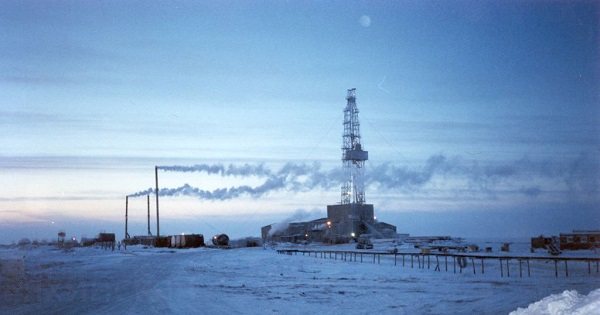
Near the city of Novy Urengoy in the Yamalo-Nenets District. The purpose of drilling the Earth was to determine the composition of the earth's crust at the site of drilling and determine the profitability of developing large depths for mining.
As is usually the case with super deep wells, the subsoil presented the researchers with many "surprises". For example, at a depth of about 4 km the temperature reached +125 (higher than the calculated one), and after 3 more km, the temperature was already +210 degrees. Nevertheless, scientists have completed their studies, and in 2006 the well was liquidated.
8 Saatli in Azerbaijan
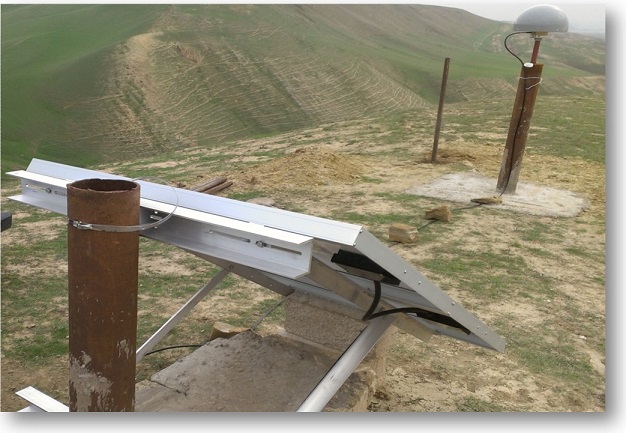
In the USSR, one of the deepest wells in the world, Saatlinskaya, was drilled in the territory of the Azerbaijan Republic. It was planned to bring its depth to 11 km and carry out various studies related both to the structure of the earth's crust and to the development of oil at different depths.
However, it was not possible to drill such a deep well, as it happens very, very often. During operation, machines often fail because of extremely high temperatures and pressures; Well bends, since hardness of different rocks is not uniform; often a minor breakdown entails such problems that their solution requires more funds than the creation of a new one.
So in this case, despite the fact that the materials obtained as a result of drilling were very valuable, the work had to be stopped at around 8324 m.
7 Cisterdorf - the deepest in Austria

Another deep hole was drilled in Austria, near the town of Cisterdorf. Nearby there were deposits of gas and oil, and geologists expected that an ultra-deep well would produce super-profits in the field of mining.
Indeed, at a very considerable depth, natural gas was discovered - to the despair of specialists, it was impossible to extract it. Further drilling ended in an accident, the walls of the well collapsed.
It did not make sense to restore it, we decided to drill the other by the side, but it did not find anything interesting for the industrialists.
6 University in the USA

One of the deepest wells on Earth is the University in the United States. Its depth is 8686 m. The materials obtained as a result of drilling are of considerable interest, since they give a new material on the structure of the planet on which we live.
Surprisingly, as a result, it turned out that scientists were not right, but science fiction writers: there are layers of minerals in the depths, and there is life at great depth - it's really about bacteria!
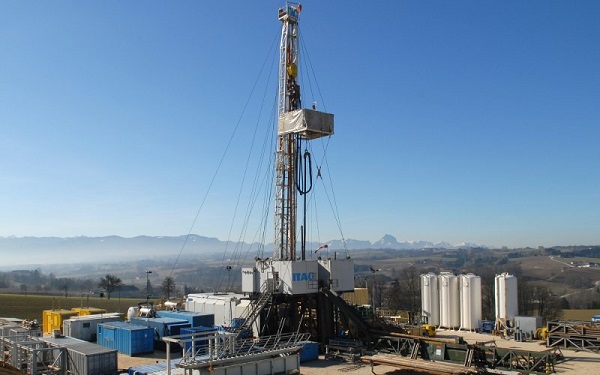
In the 90s, Germany began drilling the super deep well Hauptbourung. It was planned to bring its depth to 12 km, but, as is usually the case with super-deep mines, plans were not given to be crowned with success. Already at around 7 meters with a few meters, the problems associated with the machine guns began: drilling vertically downwards became impossible, the mine began to deviate more and more to the side. Each meter was given with difficulty, and the temperature grew extremely.
Finally, when the heat reached 270 degrees, and the endless accidents and failures of all exhausted, it was decided to suspend the work. This happened at a depth of 9.1 km, which makes the Hauptbourung well one of the deepest.
Scientific materials obtained as a result of drilling became the basis for thousands of studies, and the mine itself is currently used for tourist purposes.
4 Beiden-Unit
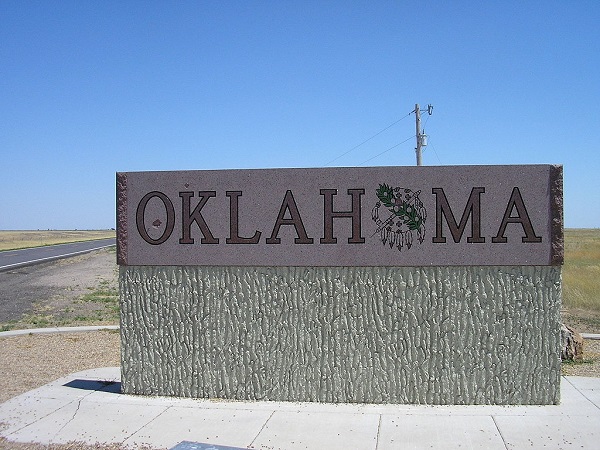
In the US, Lone Star attempted to drill an ultra-deep well in 1970. The place near the city of Anadarko in the state of Oklahoma was chosen not by chance: here the wild nature and high scientific potential create a convenient opportunity both for drilling a well and for studying it.
The work was carried out for more than a year, and during this time drilled to a depth of 9159 m, which allows it to be included in the number of the deepest mines in the world.
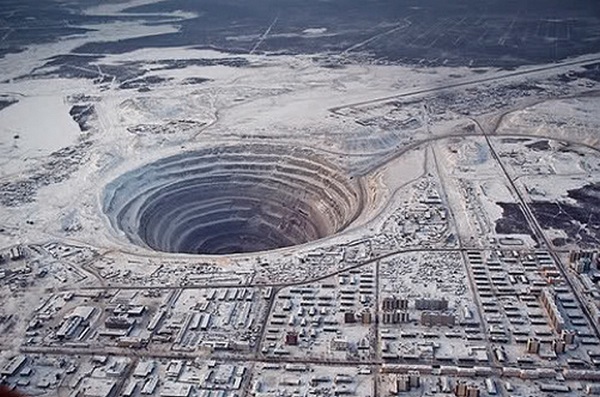
And, finally, we represent the three deepest wells in the world. In third place, Bert Rogers is the world's first super deep well, which, however, did not last long the deepest. After only a short time, the deepest well in the USSR, the Kola, appeared.
Berta Rogers was drilled by the company GHK, which is engaged in the development of minerals, mainly natural gas. The aim of the work was to search for gas at great depth. Work began in 1970, when very little was known about the earth's interior.
The company had high hopes for a place in Washito County, because there are a lot of minerals in Oklahoma, and at that time scientists thought that in the thickness of the earth there are whole layers of oil and gas. However, 500 days of work and huge funds invested in the project proved useless: the drill melted in a layer of liquid sulfur, and no gas or oil was found.
In addition, during drilling, no scientific studies were carried out, since the well had only commercial significance.
2 KTB-Oberpfalz
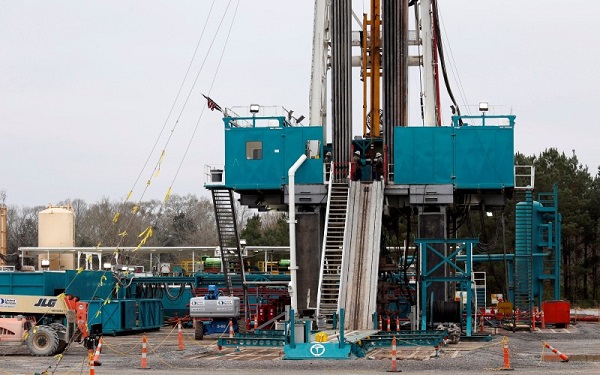
On the second place in our rating German well Oberpfalts, reached a depth of almost 10 km.
This mine is the record holder as the deepest vertical well, since without deviations to the side it goes up to a depth of 7500 m! This is an unprecedented indicator, for mines at great depth inevitably warp, but the unique equipment used by scientists from Germany has allowed a very long time to move the drill vertically down.
Not too large and the diameter difference. Super-deep wells start on the surface of the earth from a hole of rather large diameter (in Oberpfalz - 71 cm), and then gradually narrow. At the bottom, the German well has a diameter of only about 16 cm.
The reason for stopping the work is the same as in all other cases - failure of equipment due to high temperatures.
1 Kola well - the deepest in the world
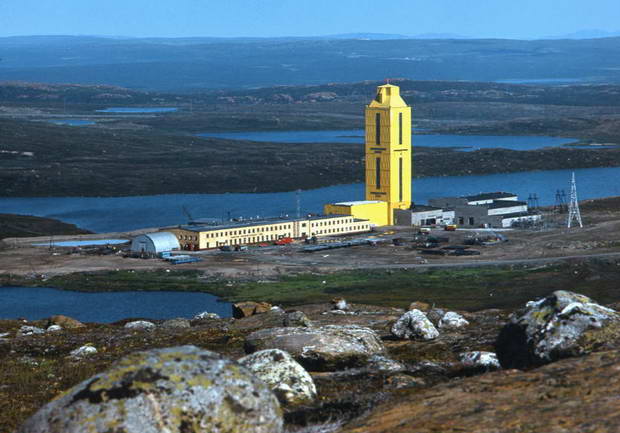
A stupid legend we owe to the "duck" launched in the Western press, where, referring to the mythical "world-famous scientist" Azzakova, it was told about the "being" that escaped from the mine, the temperature in which reached 1000 degrees, the moans of millions of people who signed up for microphone, lowered down and so on.
From the first glance it can be seen that the story is sewn with white threads (and, incidentally, it was published in the "fool's day"): the temperature in the mine was not more than 220 degrees, however, with it, as at 1000 degrees, no microphone can work ; creatures did not break out, but the named scientist does not exist.
The Kola well is the deepest in the world. Its depth reaches 12,262 m, which greatly exceeds the depth of other mines. But not the extent! At the moment, there are at least three wells - Qatar, Sakhalin-1 and one of the wells of the Chayvinskoye field (Z-42), which are longer but not deeper.
Kola gave the scientists a colossal material, which is still not completely processed and understood.
| A place | Name | A country | Depth |
|---|---|---|---|
| 1 | Kola | the USSR | 12262 |
| 2 | KTB-Oberpfalz | Germany | 9900 |
| 3 | USA | 9583 | |
| 4 | Beiden-Unit | USA | 9159 |
| 5 | Germany | 9100 | |
| 6 | USA | 8686 | |
| 7 | Cisterdorf | Austria | 8553 |
| 8 | USSR (modern Azerbaijan) | 8324 | |
| 9 | Russia | 8250 | |
| 10 | Shevchenkovsky | USSR (Ukraine) | 7520 |
You will be interested













